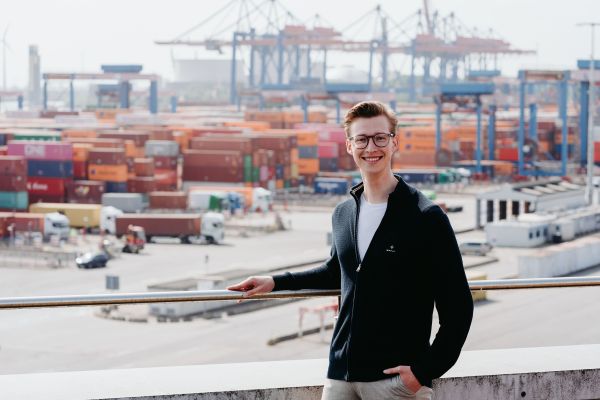Fernride has figured out a way to launch a commercially viable autonomous, electric truck business today. The secret? Not driving on public roads.
Most AV trucking companies are going after the moonshot: Using self-driving freight trucks — typically 18-wheelers — to haul goods over long distances. Startups like Waymo, TuSimple, Kodiak Robotics and Aurora have all had commercial pilot projects and are actively testing on public highways in Texas, Arizona and other southern states. None of them are operating without a human safety operator in the front seat; most are years away from commercialization.
Fernride, a Munich-based startup founded in 2019, is in a different kind of trucks business. It’s focused on the yard trucks used to move trailers and containers around ports, terminals and distribution facilities.
“We wanted to do things completely differently,” said Hendrik Kramer, CEO and co-founder of Fernride. “First, we wanted to focus on the use case that works today, specifically yards or geofenced areas on private sites where we can launch a product now. Then when we have launched that first product and built customer relationships, we can scale to the open roads.”
Fernride’s trucks have Level 4 autonomous capabilities, which means they can drive themselves without human intervention under certain conditions. There is a remote driver who monitors the self-driving trucks and can assist the vehicles if needed. Fernride calls this “human-assisted autonomy” — a combination of full Level 4 driving and tele-operated driving that allows one remote driver to control four trucks at a time. This approach, Kramer says, guarantees 100% operational availability of the system from the get-go.
Fernride is currently working with a fleet of six trucks and plans to scale to 20 by the end of 2023. The startup locked in a partnership with Terberg, a Dutch yard truck manufacturer, to begin series production on Fernride-enabled trucks starting next year. The goal is to scale to 1,000 trucks to accommodate the needs of Fernride’s current four customers. The startup is already working with Volkswagen’s internal logistics unit VW Group Logistics, DB Schenker, European home appliance manufacturer BSH and HHLA.
To reach that goal, Fernride has raised $31 million in a Series A round, which Kramer says can help the company accelerate commercial scaling and be a leader in the category of yard automation. Aside from building more vehicles, the startup wants to secure new enterprise customers and start deploying trucks in ports.
The round was led by VC firms 10x Founders, Promus Ventures, Fly Ventures, Speedinvest and Push Ventures, along with corporate investors HHLA Next, DB Schenker via Schenker Ventures and Krone.
Transportation as a service
Kramer says Fernride’s business model to start is transportation as a service. The startup’s software suite includes tele-operated and autonomous driving as well as management software that integrates with a customer’s logistics processes. As the company gets off the ground, it is starting out by employing the remote truck drivers and operating fleets on behalf of customers. In the future, Fernride will scale by training a customer’s drivers to become remote operators and letting them manage their own fleet of Fernride trucks. At this point, the business model will switch to more of a SaaS model per truck per year, says Kramer.
The company claims to be cost competitive or even more affordable than traditional logistics service providers. Fernride will be able to automate more parts of the journey over time as it collects more data on how its vehicles maneuver yards on their own or with the help of a remote driver, Kramer said.
Fernride is focused on scaling yard automation before moving onto more complex operational design domains (ODDs). The startup hopes to start short-haul routes on public roads with existing customers in two to three years. Before that happens, though, Fernride’s technology will have to expand and improve before it leaves the yard. For one, Fernride’s trucks don’t drive any faster than 20 miles per hour in the yards. That minimizes the potential for accidents in this use case, but doesn’t provide much utility on highways.
Fernride also relies on cellular connectivity in order to keep its remote drivers in the loop. Kramer said most of Fernride’s customers deploy private 4G and 5G networks in their yards, which the startup’s trucks tap into. When the company moves to open roads, it won’t be able to rely on remote drivers much because there will be too much latency.
“Ideally the vehicles will be capable of driving 95% to 99% of the journey at that point and only use the remote operator for a small portion,” said Kramer.
This article was updated to include more information about Fernride’s business model.
